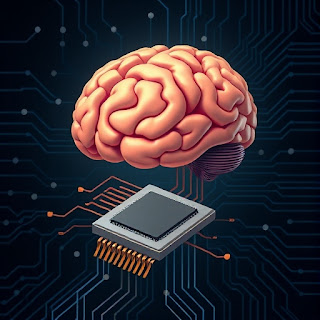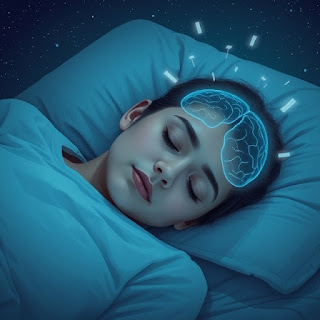The human brain is an incredible organ that drives everything we do, from simple daily tasks to complex cognitive processes. It’s an intricate powerhouse of energy, memory, and adaptability, yet many aspects of its function remain mysterious. In this blog, we’ll uncover ten mind-blowing facts about the human brain, highlighting its energy consumption, memory capabilities, neuroplasticity, and much more. Let’s dive into the fascinating world of neuroscience!
1. The Brain Consumes 20% of Your Body's Energy
Although the human brain makes up only 2% of your body weight, it consumes around 20% of your energy. This energy is required to fuel its 86 billion neurons, which are constantly firing and processing information. This brain energy consumption is essential for maintaining functions like thinking, learning, and even basic survival tasks.
Interestingly, the brain’s energy usage doesn’t decrease significantly during rest, emphasizing its continuous workload. This makes it one of the most energy-intensive organs in your body.
 |
| Diagram illustrating the brain's high energy consumption relative to body weight |
While it’s amazing that the brain uses 20% of the body’s energy, the way it uses that energy is just as fascinating. Most of it powers the brain's electrical activity, while the rest supports essential processes like repairing cells and maintaining communication between neurons. Even when you're daydreaming, your brain's "default mode network" is hard at work.
Fun Fact: The brain burns about 300-400 calories daily just to keep you alive and thinking!
2. Your Brain Generates Enough Electricity to Power a Light Bulb
Did you know that the human brain produces approximately 23 watts of electricity when awake? This electricity is generated through the activity of billions of neurons communicating via electrical signals. This unique feature not only powers thought processes but also enables technologies like EEGs to measure electricity generated by the brain.
This bioelectric activity is crucial for everything from reflexes to conscious decision-making.
 |
| EEG machine displaying electrical signals generated by the human brain |
The electrical activity in the brain comes from ions (charged particles) moving across neuron membranes. This creates tiny electrical impulses that combine to generate a measurable amount of electricity. The fact that it can light a small bulb shows just how dynamic this bioelectric activity is.
Did You Know? Brain activity continues even after a person passes away, sometimes for several minutes.
3. Memories Are More Fragile Than You Think
Our memories are not as reliable as we might believe. Each time you recall a memory, your brain essentially reconstructs it. This means that memories can be altered by emotions, new experiences, or even the passage of time—a process known as memory reconstruction.
This phenomenon explains why eyewitness accounts are often inconsistent and why nostalgia can distort our view of the past.
 |
| A person reflecting on memories, representing the brain's reconstructive process. |
The way your brain reconstructs memories is similar to editing a story. Every time you revisit a memory, it’s influenced by your current emotions, thoughts, and perspective. This is why memories from childhood often feel exaggerated or incomplete.
Fun Tip: Writing down important events soon after they happen can help preserve them more accurately.
4. The Brain Processes Faster Than Supercomputers
Neurons in the brain transmit information at speeds of up to 268 miles per hour, allowing us to react almost instantly to stimuli. Unlike computers, the brain processes information in parallel, making it more efficient in specific tasks like pattern recognition. The debate of brain speed vs computers highlights how advanced our neural systems are.
While supercomputers excel in raw computational power, the human brain's adaptability and speed remain unmatched.
 |
| Visualization comparing the processing speed of the human brain and a computer |
Neurons send messages to each other using electrical impulses and chemical signals. This two-way communication happens in milliseconds. Imagine downloading a huge file on your computer in seconds—that's how quickly your brain processes information.
Extra Insight: While neurons are fast, they’re not all equally speedy. Some transmit signals almost instantly, while others take their time to ensure accuracy.
5. Neuroplasticity: The Brain’s Ability to Rewire Itself
One of the most mind-blowing facts about the brain is its capacity for neuroplasticity. This ability allows the brain to reorganize itself by forming new neural connections in response to learning or injury. For instance, stroke survivors often regain abilities through intensive therapy that harnesses this phenomenon.
Neuroplasticity is also key to skill development, proving that the brain is adaptable at any age.
 |
| Visualization of neuroplasticity showing neurons connecting in the brain |
Neuroplasticity isn’t just about recovering from injuries. It’s also what helps you learn new skills, like playing a musical instrument or speaking another language. When you practice something regularly, your brain strengthens the neural pathways associated with that skill.
Fun Fact: The saying “practice makes perfect” is scientifically accurate—it’s your brain rewiring itself to perform better!
6. The Brain is Active Even During Sleep
Far from resting, the brain remains highly active during sleep, engaging in critical processes like memory consolidation. This helps organize and store information from the day. Moreover, sleep allows the brain to clear toxins that accumulate during waking hours, contributing to mental health and cognitive efficiency.
Lack of sleep can disrupt this balance, affecting everything from mood to memory retention.
 |
| Depiction of brain activity during sleep as part of memory consolidation |
When you're sleeping, your brain is like a busy office at night. It files away memories, solves problems you didn’t finish during the day, and cleans up waste products using the glymphatic system (like a brainwashing mechanism).
Did You Know? Dreams are thought to be the brain’s way of processing emotions and organizing information.
7. Multitasking is a Myth
Despite popular belief, the human brain cannot focus on multiple tasks simultaneously. Instead, it switches rapidly between tasks, which can lead to reduced productivity and more errors. This misconception about brain multitasking has been debunked by numerous studies showing that focusing on one task at a time is far more effective.
To improve efficiency, give your brain the space to concentrate fully on one activity.
 |
| Visualization of multitasking, highlighting the brain's limitations |
The next time you try to text while listening to a lecture, remember that your brain doesn’t actually multitask. It switches between tasks quickly, which can reduce your overall focus and understanding. This is why single-tasking is more efficient.
Pro Tip: To boost productivity, try the “Pomodoro Technique” by focusing on one task for 25 minutes, then taking a 5-minute break.
8. Chronic Pain Can Be Reprogrammed by the Brain
Through techniques like neurofeedback and mindfulness, individuals suffering from chronic pain can reprogram their brain to reinterpret pain signals. This shows how adaptable the brain is, even when faced with persistent discomfort.
Such strategies are particularly helpful for those seeking alternatives to medication for pain management.
 |
| Person meditating, symbolizing the brain's ability to reprogram pain perception |
People with chronic pain often feel discomfort even without a physical cause, as their brains keep misinterpreting harmless signals as pain. Techniques like mindfulness, meditation, and neurofeedback can "teach" the brain to respond differently.
Did You Know? Phantom limb pain—when amputees feel pain in a limb that’s no longer there—is another example of the brain’s role in pain perception.
9. The Left-Brain vs. Right-Brain Theory is a Myth
The popular notion that people are either “left-brained” (logical) or “right-brained” (creative) is entirely false. The two hemispheres of the brain work together for nearly all cognitive tasks. This balance is a testament to the brain’s incredible interconnectedness, making the left vs right brain myth one of the most persistent misconceptions in neuroscience.
 |
| Illustration showing the harmony between the left and right brain hemispheres |
While certain tasks like language are mostly handled by the left hemisphere and creativity often involves the right, the two sides of the brain are constantly communicating. This teamwork is what makes us capable of complex thoughts and actions.
Fun Fact: Even activities like solving math problems involve both hemispheres working together!
10. The Brain’s Memory Capacity is Virtually Limitless
The brain’s memory storage capacity is estimated at around 2.5 petabytes, equivalent to about 3 million hours of TV shows. This human brain storage capability is made possible by trillions of synapses that enable vast information retention.
However, this capacity is not just about quantity—it’s also about how effectively we can recall and use the information.
 |
| Visualization of the human brain's massive memory capacity |
Imagine your brain as a giant library filled with books of information. Each “book” is stored in the synapses—connections between neurons. The more you recall or use a memory, the stronger that connection becomes.
Extra Insight: Forgetting things isn’t always bad; it’s the brain’s way of decluttering and making space for new, more important information.
Bonus Brain Facts
- The Brain Feels No Pain: Even though it processes pain signals, the brain itself has no pain receptors. This is why brain surgery can be performed while a patient is awake.
- The Human Brain is Shrinking: Over the past 20,000 years, the average human brain has shrunk by about the size of a tennis ball. Scientists believe this could be due to efficiency improvements in how the brain works.
- Your Brain is 73% Water: Just a small amount of dehydration (around 2%) can impair memory, attention, and other cognitive functions.
The mind-blowing facts about the human brain prove just how extraordinary this organ truly is. From its ability to rewire itself to its unparalleled memory capacity, the brain is a testament to human potential. Understanding these facts can deepen your appreciation for the organ that shapes who you are.
Make sure to share these intriguing insights with others and spark a conversation about the wonders of the human brain!



No comments:
Post a Comment